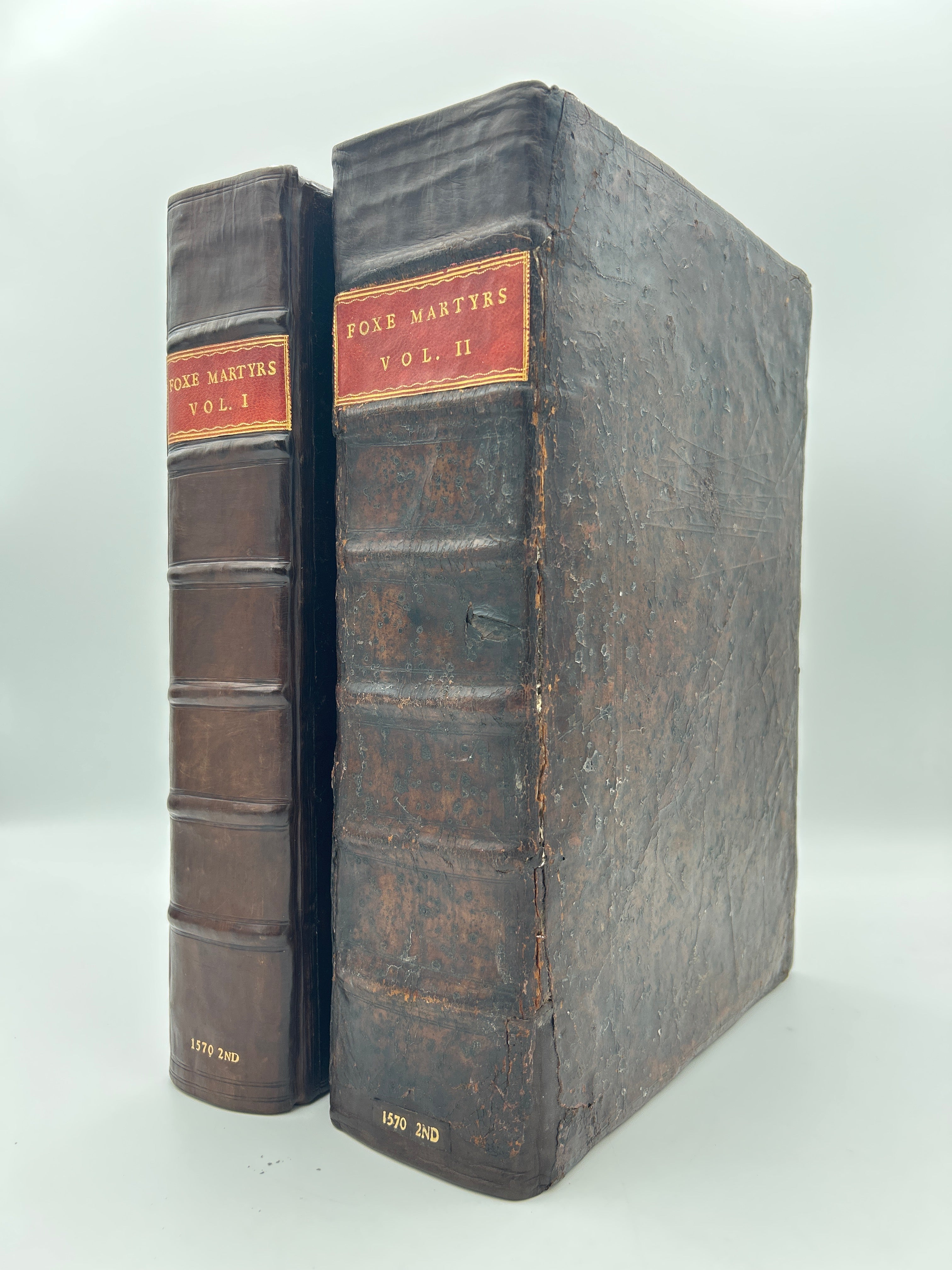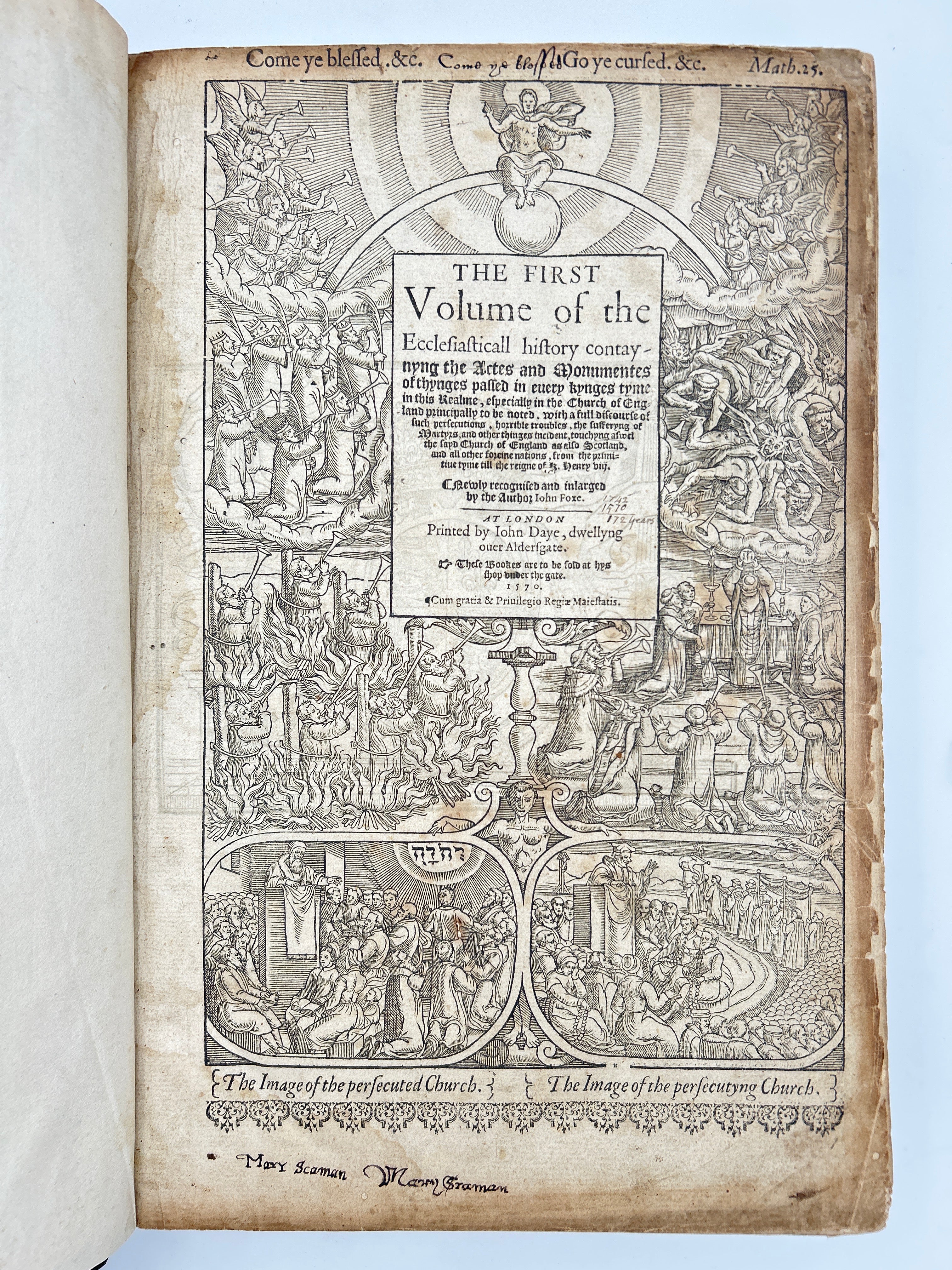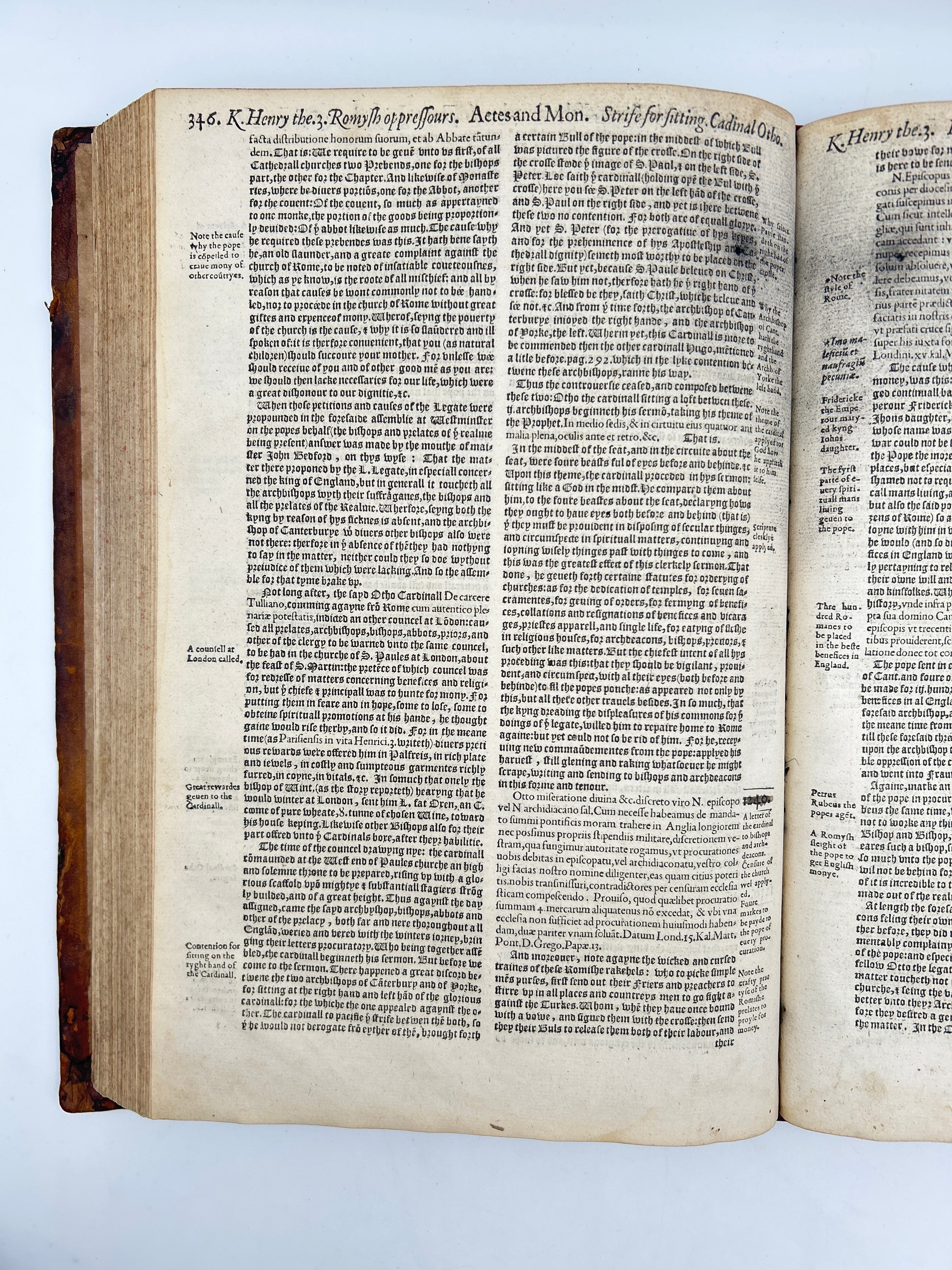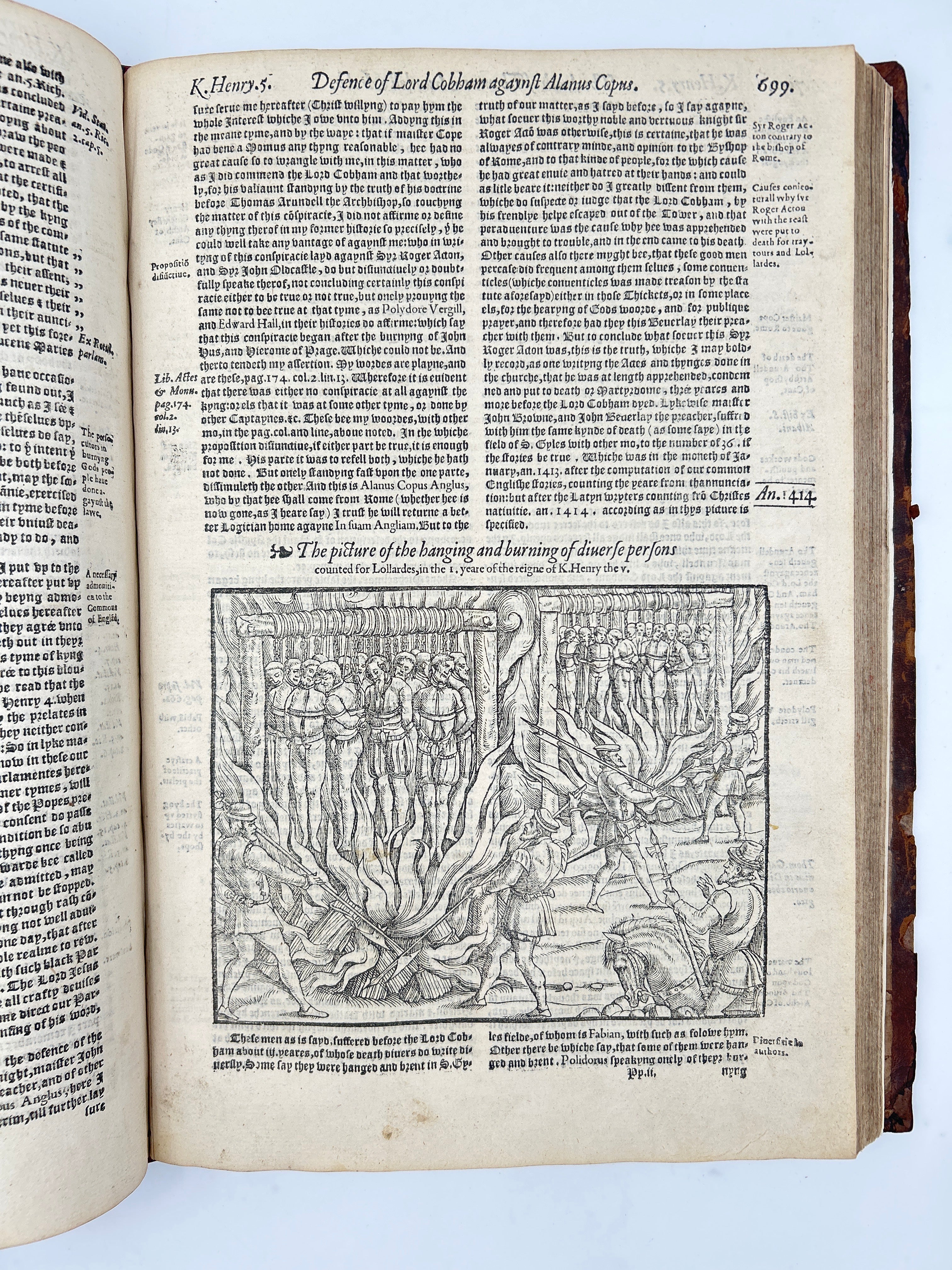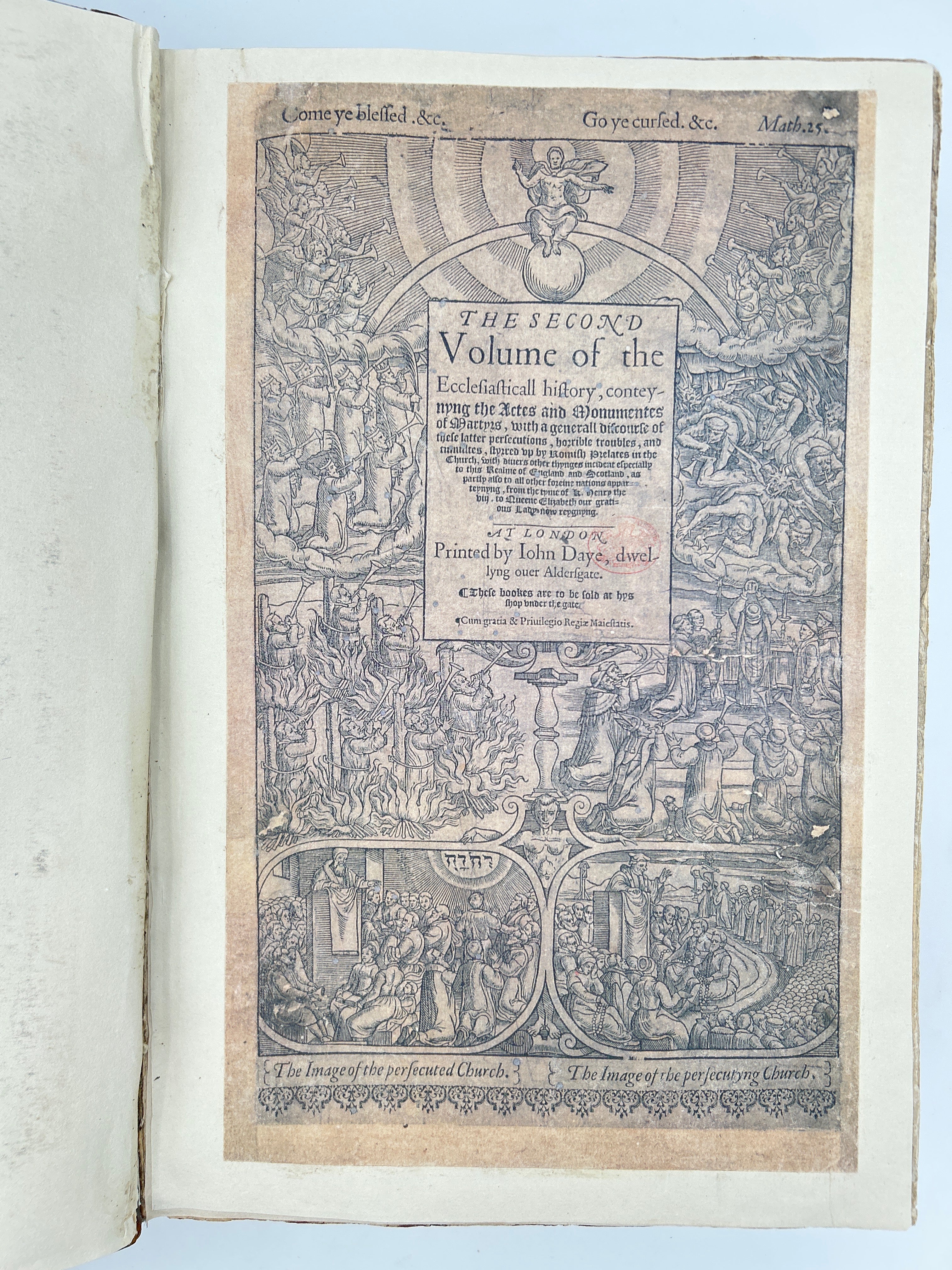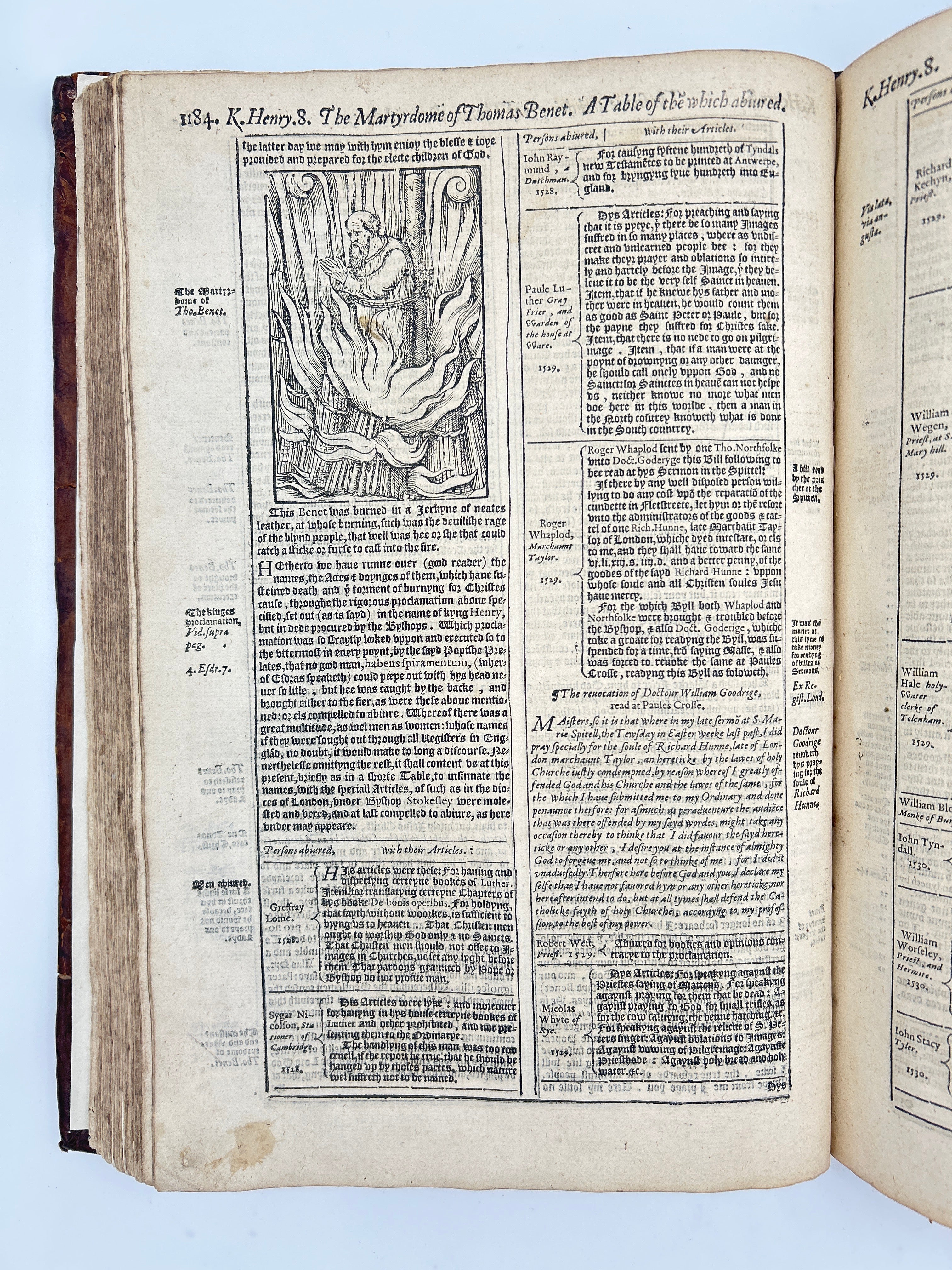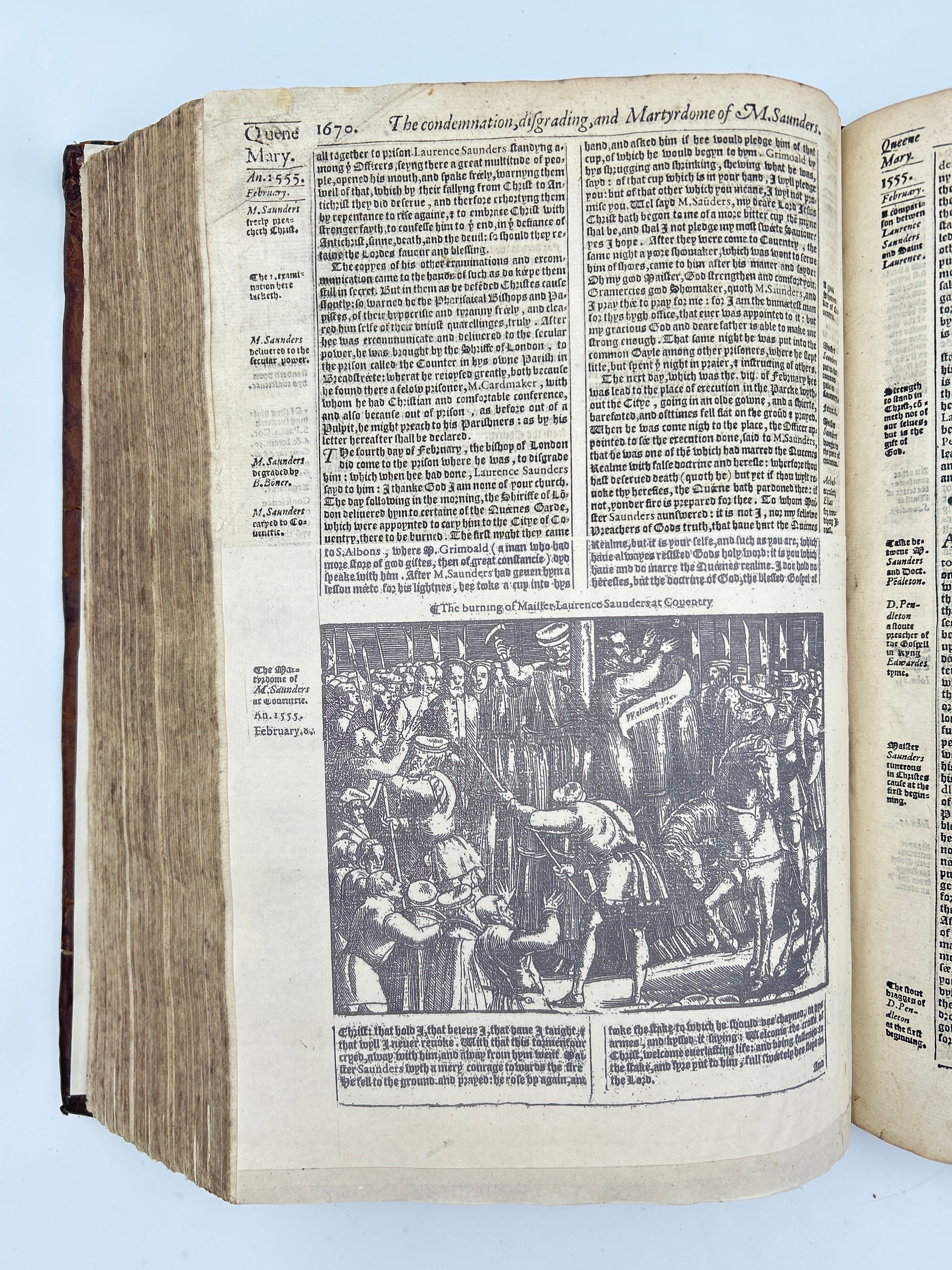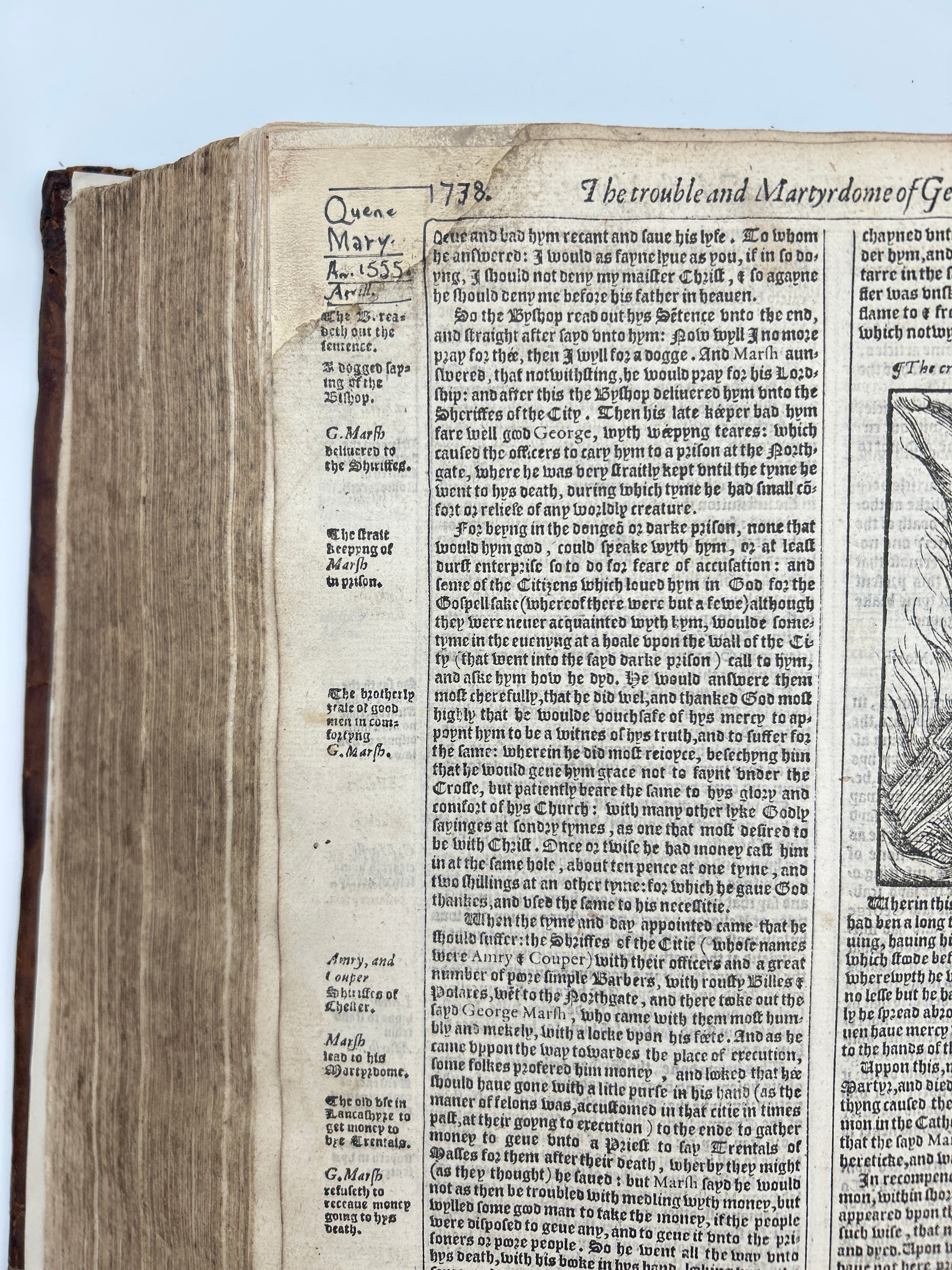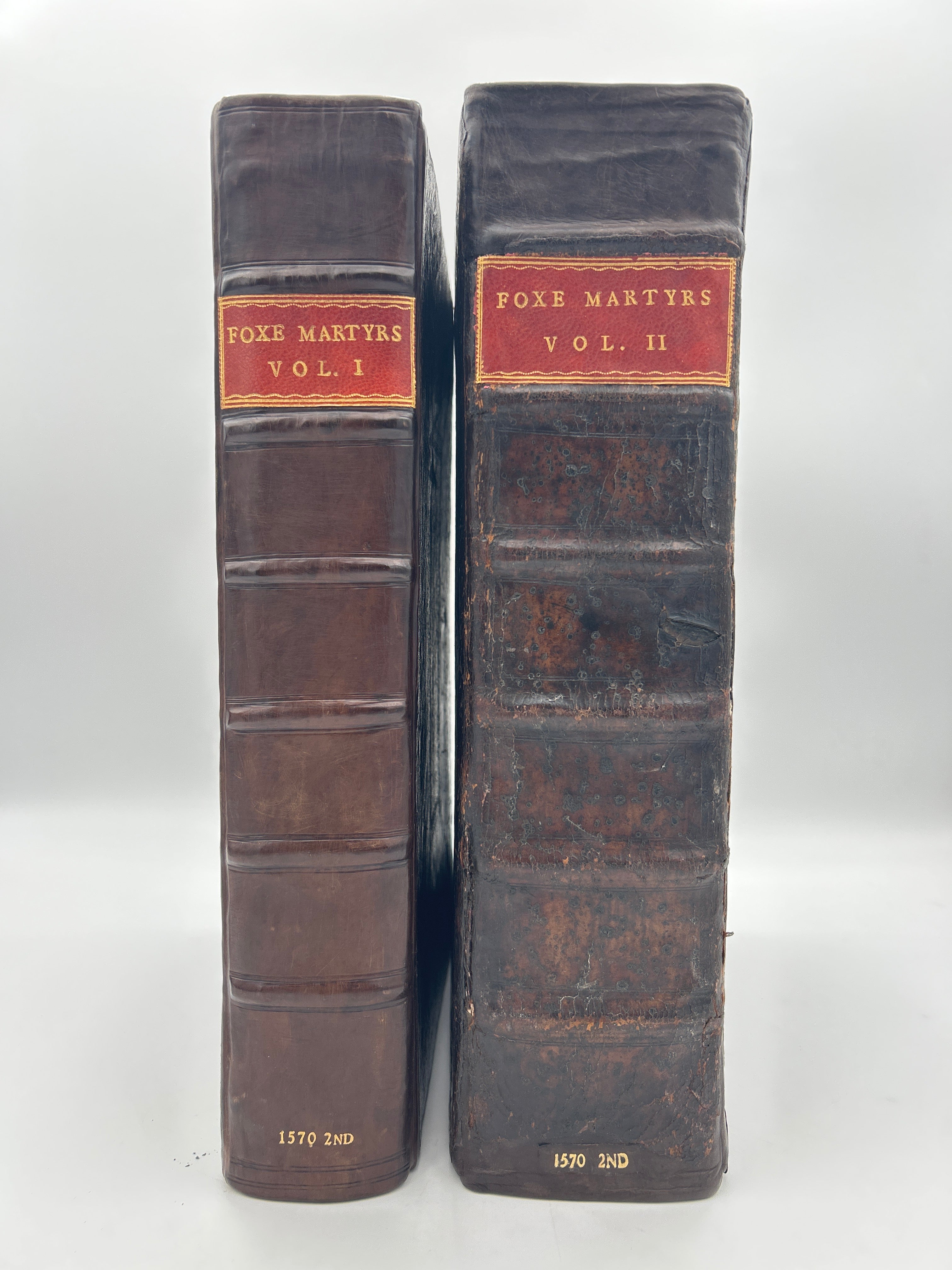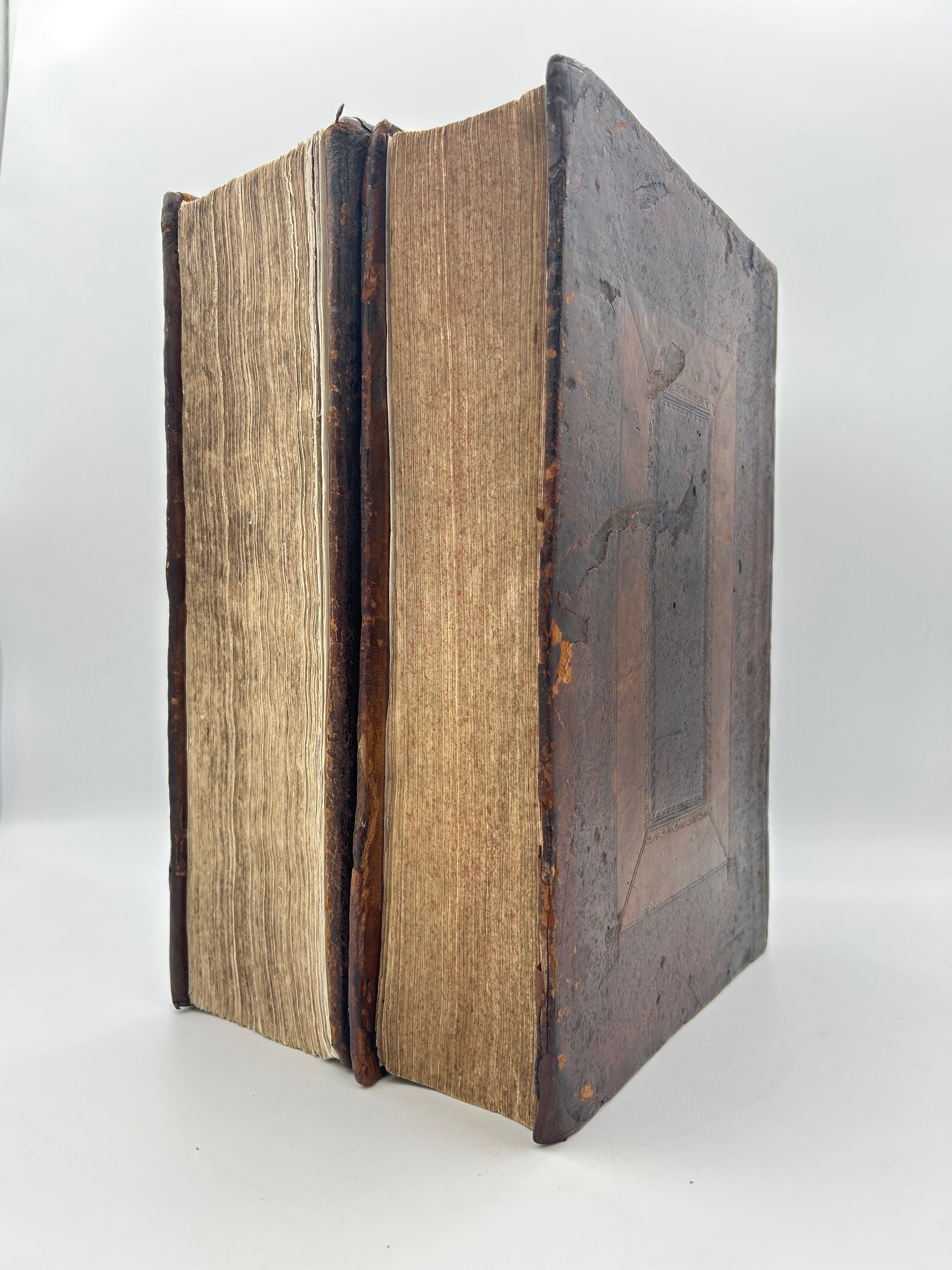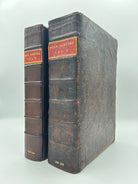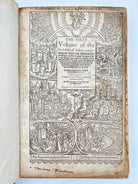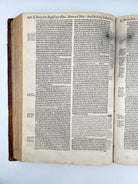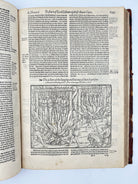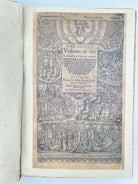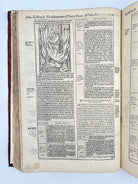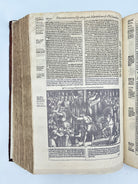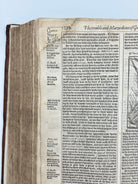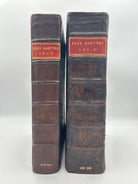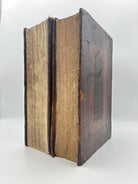Foxe’s Book of Martyrs
Couldn't load pickup availability
5B John Foxe. Ecclesiastical history containing the acres and monuments of things passed in every kings time in this realm. London: John Daye, 1570. Two Volumes. Second Edition
Notes
Foxe’s Book of Martyrs, first published in 1563 under the title Acts and Monuments, is a powerful and often harrowing account of Christian persecution from the early Church through the Protestant Reformation. Compiled by English historian and clergyman John Foxe, the book vividly details the trials, tortures, and executions of believers who were killed for their faith—particularly emphasizing the suffering of English Protestants under Catholic monarchs like Mary I. Rich in historical narrative, theological commentary, and eyewitness testimony, the book was both a devotional work and a rallying cry for the Protestant cause. Its detailed accounts of martyrs’ courage in the face of death made it a staple in English households for centuries, second in popularity only to the Bible, and it played a major role in shaping the Protestant identity in England and beyond.
This 1570 second edition is a greatly expanded version of the first. More than 500 pages of text were added, and the number of wood cuts increased from 60 to 150. The year after this second edition was published it was ordered that a copy of the work be changed beside the Bible cathedrals and some churches and extracts were read aloud in church as though scripture. No other book did more to Foster sense of specifically English form of Protestant ism forged through violence, persecution, and adversity. described as “the greatest single influence on English protestant thinking of the late Tudor and early Stuart period.”
John Foxe (1516–1587) was a devout English scholar and reformer who fled to the Continent during the Marian persecutions, returning to England after Elizabeth I came to power. Deeply committed to the Protestant cause, Foxe saw history as a spiritual battleground between true believers and corrupt institutions. His research for Book of Martyrsinvolved combing through church records, court documents, letters, and personal testimonies, which he compiled into an emotionally charged narrative of sacrifice and divine justice. Though some modern historians have questioned the accuracy or bias of certain episodes, Foxe's work remains a monumental achievement in religious history and early English print culture.
It is poignantly recorded that Joseph Smith, the founder of the Church of Jesus Christ of Latter-day Saints, was reading from Foxe’s Book of Martyrs shortly before his death at Carthage Jail in 1844. The moment carries deep symbolic weight as Smith was studying the testimonies of those who suffered and died for their faith just before becoming a martyr himself. Whether by coincidence or conviction, his engagement with Foxe’s narrative in his final hours draws a striking parallel between the early Christian martyrs and Smith’s own sense of divine calling and persecution.
Description
Multiple pages have been repaired with part of the leaf and facsimile. Top right corners of pages 1675 through 1750 have been repaired with the text written in by hand. Volume one is complete. Volume one is bound in panel calf and volume two and modeled calf. Corners repaired both volumes have been back. Volume two has original spine laid down. Modern Morocco labels to spine. Joints of volume two are slightly cracked with some surface marking and where. Some internal foxing illustrated throughout with celebrated wood cuts. Title page of volume one is inscribed with the name Mary Scamman.
